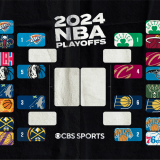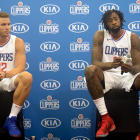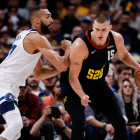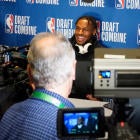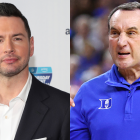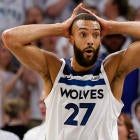The Los Angeles Clippers you knew are gone. With Chris Paul in Houston and J.J. Redick in Philadelphia, there will be no more talk about whether or not they can get over the hump, no more speculation about how their stars get along, no more questions about why the front office can't put together a better bench. As soon as Blake Griffin re-signed this past summer, he became the No. 1 option for a franchise that needed new energy. With their revamped roster, energy should not be in short supply.
The new-look Clippers won't be as good as they were with Paul running the show, but they might be more exciting. There is less pressure now, and they sure look to be having fun in the preseason. Here are six questions on the subject of how successful they can be:
1. How effective will this new offense be?
There are all sorts of good vibes right now, with coach Doc Rivers saying he prefers a motion-based offense with playmakers at a variety of positions. Griffin might be the primary playmaker, but Patrick Beverley, Danilo Gallinari, Milos Teodosic, Lou Williams and Austin Rivers will all have the opportunity to run pick-and-rolls and create. If this works, the Clippers will be much less predictable than they have been in a while.
There is, however, risk in this kind of stylistic shift. Just like Toronto, Los Angeles runs the risk of becoming more turnover-prone and less disciplined, which would hurt its overall offensive efficiency. It could be a challenge to find minutes for Griffin at center and Gallinari at power forward, and guys like Griffin, Austin Rivers, Wesley Johnson and Sam Dekker will need to earn opponents' respect when it comes to outside shooting. There is potential for this team to be special, but the Clippers will have to be more than the sum of their parts.
2. Is Griffin going to have a career year?
Let's say Griffin has a usage rate above 30 percent, makes around 37 percent of his 3-pointers, dominates the defensive glass and averages six or seven assists. That would be easily the most productive season of his career, and it might even vault him into the MVP discussion. It's also within the realm of possibility.
In giving Griffin a $173 million contract, the Clippers made a bet that he will be able to avoid more freak injuries, get his bounce back and regain his status as one of the top 10 players in the league. At 28, he could just be entering his prime, with more responsibility and a much more mature offensive arsenal than he had when he was a nightly highlight factory.
The trick is going to be balancing his perimeter game with the explosiveness and physicality that made him so thrilling as a young player. Griffin should run pick-and-rolls, but he must also dunk on people. He should space the floor, but he must also hit the offensive glass. He should throw alley-oops, but he should also finish them.
3. Is Teodosic a difference-maker or a novelty?
Everybody loves the 30-year-old Serbian point guard, who Beverley nominated as the best passer in the NBA just about the second the Clippers signed him. He throws passes that surprise even his teammates, he has a wild shaggy-hair-and-thick-beard combo going on and he apparently eats cheeseburgers for breakfast. You'd have to be a real killjoy to not want him to make a smooth transition to the NBA.
On offense, he should be just fine. Few players on the planet are as clever as he is running pick-and-rolls, and he can space the floor with his shooting. The concern is on the defensive end, where he lacks speed, size and length. Opponents are going to look to exploit him, and his teammates will need to cover for him in order to keep him on the court.
4. Can Gallinari stay healthy and be his best self?
Beloved by the statistically inclined, Gallinari boasts a rare combination of shooting, off-the-dribble moves and foul-drawing. He is a walking mismatch who can guard multiple positions and rarely turns the ball over. Los Angeles has needed someone like him for years, and it's a cruel twist of fate that it got him right after it dropped out of the tier of fringe title contenders. Regardless, he is a nice complement to both Griffin and DeAndre Jordan, as long as he can stay on the court.
Durability has always been an issue for Gallinari, and the Clippers are really counting on him. Forget about the fact he's probably best at power forward -- if he's not playing 3, then their only real options there are Dekker, Johnson and Rivers. Which leads us to …
5. Can they solve their roster-balance problem?
The Clippers have a bunch of small guards (Beverley, Teodosic, Lou Williams) and bigs (Griffin, Jordan, Montrezl Harrell, Willie Reed) who deserve playing time. In a league where teams can't get enough tall, switchy, versatile forwards, they are pretty thin. They're going to need Gallinari to defend the LeBrons and Durants of the world, and they're going to need Dekker to make a leap.
6. How much will we be talking about Jordan's free agency?
This might be the best way to look at the Clippers' season. If they are reinvigorated and they get better throughout the season, Jordan should believe that a long-term partnership with Griffin makes sense. If they don't quite mesh, or if injuries get in the way of them establishing a new identity, then Jordan's $24.1 million player option in 2018-19 will become a massive storyline. After all, he (tentatively) agreed to leave Los Angeles once before. There are even more emojis now.









